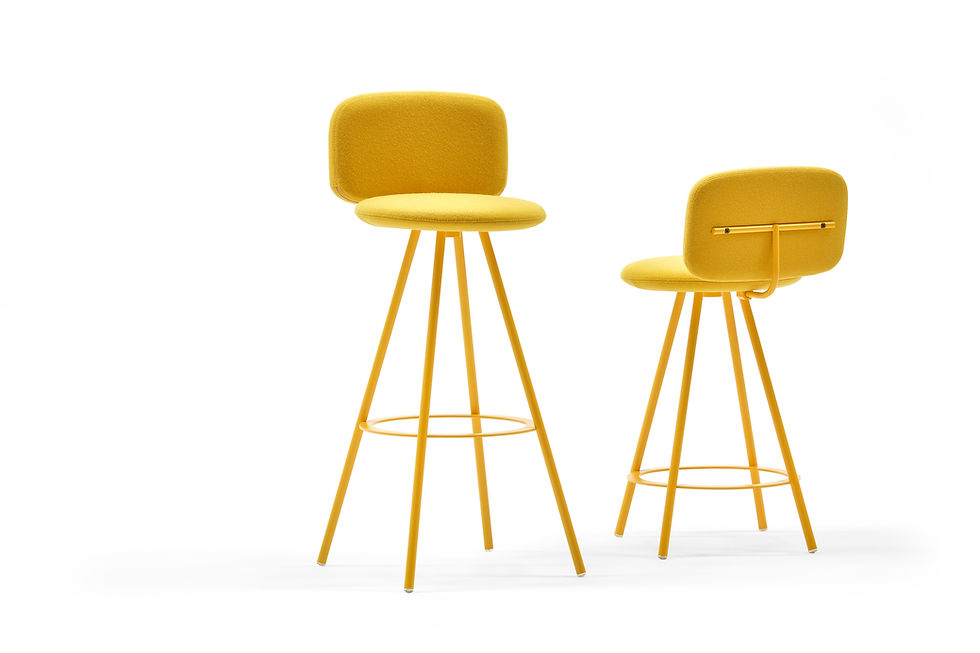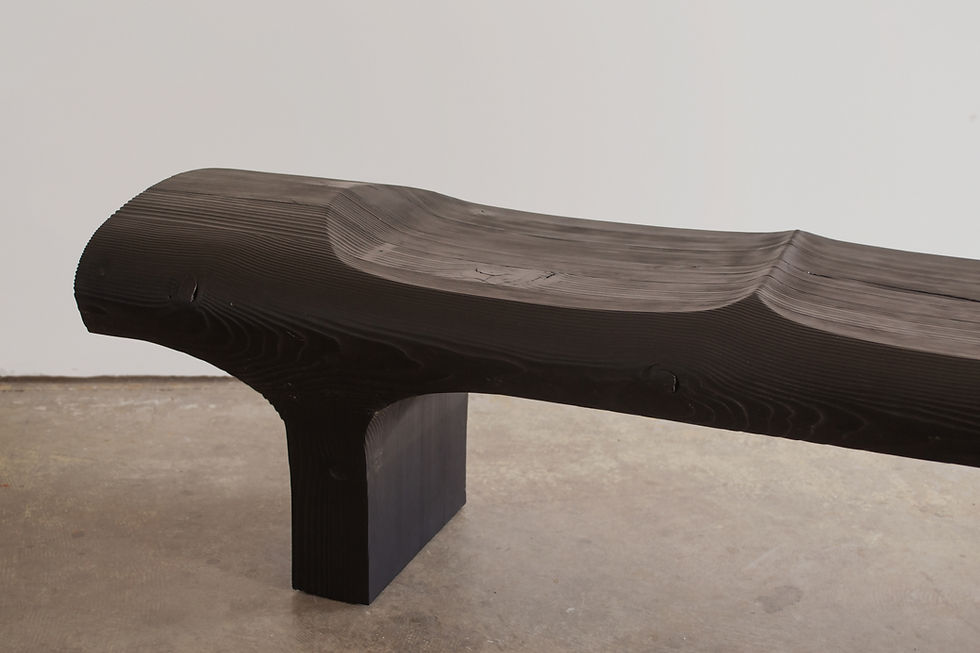Aava 02 by Arper; Image courrtesty Arper
GRAY Media announces the breakout category, sustainable design finalists for the 7th Annual GRAY Awards.
SEATTLE, Febraury 28, 2024 — Now in its 7th year, GRAY Awards — the international cross-disciplinary design awards program — continues to recognize the outstanding work happening around the world. Finalists have been selected in the fields of ARCHITECTURE, INTERIORS, LANDSCAPE, and PRODUCT DESIGN.
JUDGES CATEGORIES
Designers and manufacturers were invited to submit their projects in nine judges categories plus an editors’ pick Design for Good category. An esteemed panel of international design luminaries will select a winner in each of the initial nine categories. The winning designers will receive print and digital recognition as well as a custom designed trophy by acclaimed glass artist John Hogan.
GRAY CATEGORIES
GRAY encourages designers and manufacturers to create "Design for Good" projects —projects that have made a positive impact through design on a humanitarian, community, or environmental issue — and offers an award dedicated to these works each year.
In 2020, when the GRAY Awards expanded from a regional to international program, GRAY added a Legacy Award dedicated exclusively to a Pacific Northwest-based designer's lifetime achievement, honoring the region where GRAY began and the home to the GRAY Awards Parties. GRAY will name the next Legacy at the Party.
BREAKOUT CATEGORIES
Newly introduced at the 6th annual GRAY Awards last year, GRAY added several Breakout Categories, opening up opportunities to win GRAY Awards in micro-categories from Kitchens to Collaborations.
All winners will be announced at the GRAY Awards Party in Seattle in March, 2024 at Block 41, Seattle. The party is one of the most highly anticipated design bashes of the year, where all guests are treated like winners.
JUDGES
It is our privilege each year to welcome an international group of distinguished creatives to the GRAY Awards judging panel. Each working at the top of their game, these professionals now focus a discerning eye on determining the winners of the coveted GRAY Awards trophies.
7th annual GRAY Awards judging panel: Lee Broom, Brigitte Shim, Alessandro Munge, Silvia Tcherassi, Stephen Burks
FINALISTS - BREAKOUT CATEGORY, SUSTAINABLE DESIGN
Image courrtesty Arper
The Aava 02 chair offers an insightful peek into Arper’s revolutionary approach to sustainable furniture design. A decade after Aava was released in 2013, Aava 02 now reimagines this classic design with sustainable materials. This scooped stacking chair with an iconic, minimal silhouette was designed by Scandinavian designer Antti Kotilainen and launched at Salone del Mobile in April 2023, now, in a new palette of colors, designed to complement other Arper collections.
The shell, made of wood or recycled plastic, is characterized by variable thicknesses that highlight its sinuous profile. Available in chair and stool versions, the shells can be combined with all the bases of the collection for configurations suitable for any type of environment: four-leg and sled base (stackable) chairs, wooden legs and trestle base (with or without castors). In the chair version with trestle base, the collection can be configured with optional armrests. The stools are available on wooden legs or sled base.
For Aava 02, Arper implemented a custom post-consumer plastic, mainly derived from detergent bottles. This new post-consumer recycled polypropylene, reinforced with fiberglass offers durability while maintaining high quality color and finish, a challenge for sustainable materials. The colorways contain differing percentages of post-consumer recycled material, starting from 5% for lighter tones and up to 40% for darker tones. An average of 5.6 kilograms of waste is used to produce ten chairs, resulting in reduced plastic in landfills and a significant contribution to the circular economy. By using post-consumer plastic, Arper not only addresses the plastic waste issue but also highlights the potential of repurposed materials in furniture design. The full range of chairs and stools can now be finished in this new material, as well as a range of FSC-certified wood, or with upholstery in multiple styles. The versions upholstered in fabric, coated fabric, or leather are enriched with new possibilities with sustainable materials: both a front upholstered option and an entirely upholstered version without the use of glue, allowing for a removable seat cushion and cover so that parts may be easily separated for recycling or reuse. Appropriate for varied applications and spaces, the light, minimalist design–still relevant after ten years–promises longevity. Aava 02 offers a responsible model that has our future at top of mind, creating beauty for the generations to come.
Image courtesy Fritz Hansen
Designed originally as a one-off exhibition piece, the Banco Bench by Hugo Passos derives beauty from the simple premise of creating furniture that enhances the experience of nature. The organic backrest is expressive and functional, perfectly shaped for the contour of the back and enables people to sit in either direction on the double-facing bench. Passos designed the Banco bench as a site-specific creation for the 2019 exhibition, Social Seating, which was held in a park in Finland. From that one-off piece he worked with Fritz Hansen to develop a rescaled version suitable for production that is lighter, available in two versions as a double-facing or single-sided bench and sold as a flat-pack. Made in teak, warm when new and silvery grey when patinated, the bench speaks to Fritz Hansen's heritage and Scandinavian roots.
Photograph by Martin Tessler
The personal home of the architect and his family and the firms first foray in building to the extremely technical European Passive House Standard.
The initial property housed a tiny 1950’s house that sat squarely in its center, and was overwhelmed with decades of unchecked growth. It was both enchanting and overwhelming; a dark, secret garden, long neglected and left to its own devices. Despite these positive features, creeks are generally avoided because of the need to secure environmental permits. For architects, however, this affords an opportunity to negotiate a unique, non-conforming design for a creekside property- the District of West Vancouver offers relaxations in exchange for the preservation and rehabilitation of the riparian zone.
The design of the home began with an elongated form, running the length of the property and alongside the creek, allowing the creek’s lush growth to form a privacy barrier to the west. It was sited well away from the creek, permitting a wide riparian zone that would rehabilitate the creek border. As the design progressed, permissions to build included a requirement to remove all invasive species bordering the creek- including bamboo, English laurel and ivy, and Holly. These quick-adapting non-native species rapidly invade creek borders because their seeds and berries are carried easily downstream by the creek and by birds, choking out the native species.
The long design also ascends the hill with three distinct levels that access the home: the front entry, level with the street, the main level with access to the side yard, and the upper level with access to the backyard. The home connects to grade and serves as a part of the topography. Expansive, sliding glass doors connect the house to the landscape at all levels.
A parallel ambition for the house was to create a home that was energy neutral, and that would serve to demonstrate that climate consciousness was not at the expense of comfort or lifestyle. The Passive House Standard was introduced early in the design process, but because of the home’s complex exterior envelope, it was at first difficult to achieve a high-performance home that is also architecturally interesting. The extremely rigorous standard of a passive home- less than 15kWh per square meter annual energy for heat demand, as well as a maximum of 0.6 air changes / hr- represents an energy usage of less than 1/10 that of a code-built home. Ultimately, the home achieved Passive House certification, and has since become net-zero with the inclusion of 32 rooftop solar panels.
It is a remarkable achievement for a home with such a complex shape, with most of the glass facing west. The finishes in the house are robust and simple- polished concrete floors, oak millwork panels inside, and oak window frames. Bare, smooth concrete walls up to 2 stories high provide a vital textural juxtaposition with the wood and painted walls. Outside, the finishes are a combination of black Swiss pearl panels and dark gray stucco where insulation was required atop internalized concrete walls. The wood windows are finished with dark gray aluminum outside to increase durability and longevity. A wood burning stove provides for comfort and ambiance inside- a small human touch inside an otherwise simple modern interior. All appliances avoid entirely the use of fossil fuels - all electric, with electric ovens and induction cooktops.
Photograph by Peter Andrew Lusztyk
A playful twist on the practical drafting stool, Spinni is supportive, stylish, and takes sitting to a whole new level.
Spinni is the first collaboration between Division Twelve and celebrated Canadian designer Thom Fougere, whose design was inspired by the work of American artist Ellsworth Kelly, which informed the geometric shapes of the stool. Take one look, and you'll see it immediately - Spinni's backrest is a rectangle, the footrest and seat are circles, and the angle of the legs mimic shape of a triangle. Division Twelve’s vibrant color palette of 20+ powder coats allows you to play with color just like an influential artist when designing your own Spinni.
As with all Division Twelve products, Spinni is officially certified as carbon neutral. To achieve this carbon-neutral status, Division Twelve reduced carbon emissions at every stage of their processes – from design and the materials they used in production, distribution, and end-of-life. Of course, throughout the life cycle of each product, there is inevitable carbon that cannot be eliminated. Division Twelve completely offsets this remaining carbon with investments in third-party verified carbon offset projects through Bluesource, such as the Francis Biedler Forest Improvement Project.
Division Twelve uses Earth-approved materials that last a lifetime. Spinni’s steel frames are fully recyclable, and Division Twelve uses an eco-friendly powder coating process that limits VOC emissions in the products’ metal frames. Plus, Division Twelve is a zero-waste to landfill facility.
Image courtesy Ákos Huber
The modular Sunroom Bech was inspired by the idea of a growing family. Design and execution took almost three years with a few day long intense periods of work for the pure joy of designer, Ákos Huber. During the process, the bench was refined by numerous sketches, hand and computer drawings, and models. The idea of modularity for this piece was tested on a 1:3 scale model where the seating and leg elements could be assembled in optional order, creating different lengths and compositions. The full scale object was executed with hand tools and simple machines by the designer, in the spirit of making a unique piece with individuality.
Reclaimed wood bears the signs of the passing of time, constructing with it requires patience and sensitivity. The material first started as Douglas fir trees growing up in the lush forests of the Pacific Northwest, then they were used as structural beams and eventually continued their life as the Sunroom Bench.
After carefully selecting the beams from the yard of a a local demolition company, they arrived at the workshop where the first task was the surgical process of removing all nails, screws, and clips from the beams. This was followed by machining and shaping. Finally the uneven colors and grain patterns were unified by fire. Shou Sugi Ban, the traditional charring technique, was used to create a tactile texture and evenly black color on the surface. Even though the “wounds” are still visible on the body of the bench.
7th Annual GRAY Awards finalists' announcements began December 18, 2023 and will continue to publish daily until all categories have been announced. For more information, visit our GRAY Awards Party page.
Thank you to our 7th annual GRAY Awards sponsors and industry partners:

























